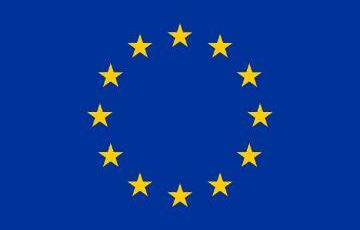
Introduction: Legal Compliance in a Connected Society
In today’s digital world, radio equipment is no longer the exclusive domain of telecom providers or electronics manufacturers. From smartwatches to wireless sensors in factories, radio-enabled devices have become essential to modern life. However, as our reliance on these technologies increases, so does the complexity of the legal framework that governs them. For businesses and legal professionals, understanding the Radio Equipment Directive 2014/53/EU (RED) and the changes in 2025 is a regulatory necessity.
This blog aims to clarify the legal framework regarding radio equipment by providing an analysis of the relevant legislation, along with practical guidance – whether you are a business owner, compliance officer or lawyer.
The Evolution of the Radio Equipment Directive
The RED has been in effect since 13 June 2016, with a one-year transition period ending on 12 June 2017. The RED’s history is one of adaptation and foresight. Initially designed to harmonize technical requirements for radio equipment across the European Union, the RED has evolved into a comprehensive legal framework that now addresses safety, electromagnetic compatibility, cybersecurity, privacy and environmental sustainability.
At its core, the RED aims to create a single market for radio equipment by setting uniform standards for safety, health and efficient use of the radio spectrum. However, as technology has advanced, so have the risks and challenges. The proliferation of Internet of Things (IoT) devices, the rise of artificial intelligence, and the growing threat of cyberattacks have all required a more nuanced and dynamic approach to regulation.
The 2025 updates to the RED mark a significant milestone. For the first time, cybersecurity requirements will become mandatory for a wide range of radio equipment, reflecting the EU’s commitment to protecting users and ensuring the resilience of digital infrastructure. This change is not just technical – it has significant legal implications, raising new questions about liability, enforcement and the role of legal professionals in guiding clients this new landscape.
Scope and Applicability: What Devices Are Regulated?
A common question for businesses and legal professionals is whether a specific product falls within the scope of the RED. The answer is not always straightforward, as the RED covers a wide range of devices, from everyday consumer electronics to specialised industrial equipment.
Under the RED, any electrical or electronic product that intentionally emits or receives radio waves for communication or radiodetermination is regulated. This also encompasses a wide range of consumer products, including – but not limited to – mobile phones, tablets, laptops, wearables such as smartwatches and fitness trackers, wireless headphones and earbuds, IoT devices for smart homes and industry, digital cameras, e-readers and navigation systems.
However, there are also important exclusions. Equipment used exclusively for public security, defence or state security is outside the scope, as are certain categories of marine and aviation equipment covered by other EU legislation. Custom-built evaluation kits intended solely for research and development are also exempt, provided they are not made available on the market.
For legal professionals, accurately determining the applicability of the RED is a critical first step in advising clients. Misclassification can lead to significant legal and financial consequences, including product recalls, fines, and reputational damage. It is therefore essential to conduct a thorough analysis of the product’s intended use, technical characteristics, and market context.
Legal Foundations: Essential Requirements and (Harmonised) Standards
At the heart of the RED are its essential requirements, which set the baseline for legal compliance. These requirements are designed to protect the health and safety of users, ensure electromagnetic compatibility, and promote the efficient use of the radio spectrum. With the 2025 updates, cybersecurity and privacy protections will also become central pillars of the legal framework.
Compliance with these requirements is typically demonstrated through the use of (harmonised) standards developed by European standardization organizations such as ETSI and CENELEC. If harmonised standards are applied, they provide a presumption of conformity with the essential requirements of the RED, streamlining the certification process and reducing the risk of legal challenges. However, manufacturers are not obliged to use harmonised standards; they may choose alternative means of demonstrating compliance, provided they can substantiate their approach with robust technical documentation.
Obligations of Market Participants under the Radio Equipment Directive
The RED imposes different obligations on manufacturers, authorised representatives, importers and distributors, each with its own legal risks and responsibilities.
Manufacturers under the Radio Equipment Directive
Manufacturers bear the primary responsibility for ensuring that radio equipment complies with all applicable requirements. This includes conducting conformity assessments, preparing and maintaining technical documentation and the EU declaration of conformity, affixing the CE marking and providing clear instructions and safety information. Manufacturers must also monitor changes in standards and legislation, updating their products and documentation accordingly.
A key legal obligation is to retain the technical documentation and the EU declaration of conformity for at least ten years after the product is placed on the EU market. Failure to maintain these documents can hinder the ability to defend against enforcement actions or liability claims.
Authorised representatives under the Radio Equipment Directive
A manufacturer may appoint an authorised representative by written mandate to act on their behalf for specified tasks. The authorised representative may, for example, keep the EU declaration of conformity and technical documentation available for national market surveillance authorities, provide necessary information and documentation and cooperate with authorities to eliminate risks posed by radio equipment.
Importers under the Radio Equipment Directive
Importers play a vital role in the compliance ecosystem, especially as products are sourced from outside the EU and placed on the EU market. Importers must verify that manufacturers have fulfilled their obligations, ensure that products are properly marked and documented and keep records accessible for market surveillance authorities. Importers are also required to take corrective action if they become aware of non-compliance, including notifying authorities and initiating product recalls if necessary. Furthermore, importers must indicate their name, registered trade name or trademark and postal address on the radio equipment, in a language easily understood by end-users and market surveillance authorities.
Distributors under the Radio Equipment Directive
Distributors are responsible for verifying that products bear the CE mark and are accompanied by the required documentation. They must ensure that both manufacturers and importers have fulfilled their obligations. Distributors must also ensure that storage and transport conditions do not compromise compliance and must cooperate with authorities in the event of enforcement actions.
Notably, an importer or distributor is considered a manufacturer under the RED – and subject to the manufacturer’s obligations – if they place radio equipment on the EU market under their own name or trade mark or modify radio equipment in such a way that affects compliance with the RED.
Consequences of Non-Compliance under the Radio Equipment Directive
Non-compliance with the RED can have serious legal and commercial consequences. Market surveillance authorities in EU Member States can order product recalls, withdrawals from the market, bans and impose fines and other penalties. In serious cases, criminal sanctions may apply, especially where non-compliance poses a risk to health and safety.
Beyond regulatory enforcement, non-compliance can expose businesses to civil liability, including lawsuits from consumers, competitors or other stakeholders. Reputational damage resulting from public recalls or enforcement actions can have lasting effects, undermining customer trust and market position.
Key Legal Trends for 2025: Cybersecurity, Sustainability and Digital Change
The legal landscape for radio equipment is rapidly changing, shaped by technological innovation, regulatory reform and shifting societal expectations. Three key trends are set to define the compliance environment in 2025 and beyond.
The importance of cybersecurity
Perhaps the most significant development is the introduction of mandatory cybersecurity requirements for internet-connected radio equipment. From 1 August 2025, manufacturers are required to implement technical and organisational measures to protect against unauthorised access, data breaches and fraud. These requirements apply to a wide range of devices, including smart home products, wearables and any equipment capable of processing personal data or enabling financial transactions.
Manufacturers must conduct risk assessments, document their cybersecurity measures and ensure that software updates and configurations are secure. Failure to comply can result in market bans, fines and legal action. For legal professionals, advising clients on cybersecurity compliance will become increasingly important.
The specific cybersecurity requirements for additional safety and interoperability measures are set out in Delegated Regulation (EU) 2022/30. This regulation defines which products are subject to these obligations and provides exceptions for products already subject to other European legislation regarding cybersecurity, such as the Medical Devices Regulation (EU) 2017/745 (MDR).
To assess compliance with the relevant essential requirements, harmonised standards EN18031-1:2024, EN18031-2:2024 and EN18031-3:2024 may be applied. As of 30 January 2025, these harmonised standards provide a presumption of conformity and are available through the Netherlands Standardization Institute (NEN).
The essential cybersecurity requirements apply to manufacturers of radio equipment within the RED’s scope. Importers must only place compliant radio equipment on the market and Distributors are required not to offer radio equipment that does not meet the essential requirements.
Harmonisation of charging standards
To reduce electronic waste and improve consumer convenience, the EU is mandating USB Type-C as the common charging interface for many categories of radio equipment. This harmonisation reflects the EU’s broader commitment to environmental sustainability and the circular economy.
Manufacturers must ensure that products are equipped with the required charging interfaces and protocols, and must provide clear information to consumers about charging capabilities. Legal professionals should advise clients on the implications of these requirements, particularly in relation to product design, labelling and marketing.
Environmental sustainability and the Green Deal
The EU’s Green Deal and Circular Economy Action Plan are driving changes in product design, recyclability and end-of-life management. Manufacturers are increasingly expected to consider the environmental impact of their products throughout the lifecycle, from raw material extraction to disposal.
Legal professionals must be prepared to advise clients on compliance with environmental regulations and on integrating sustainability considerations into product development and supply chain management.
Guide to the application of the Radio Equipment Directive
The European Commission has published a Guide to the RED to assist with its application. Although the Guide is not legally binding, it addresses practical issues relevant to manufacturers and other market operators or stakeholders. The intention is to update the Guide regularly, but the latest version is dated 19 December 2018.
Dutch Perspective: National Implementation and Market Surveillance
While the RED is an EU directive, its implementation and enforcement are carried out at the national level. In the Netherlands, the Telecommunications Act (Telecommunicatiewet) and the Dutch Authority for Digital Infrastructure (Rijksinspectie Digitale Infrastructuur (RDI)) play central roles in ensuring compliance.
The RDI conducts post-market surveillance, often through random checks or in response to reports of interference. Manufacturers, authorised representatives, importers and distributors must be able to provide technical documentation, EU declarations of conformity and other evidence of compliance upon request. The RDI also has the authority to order product recalls, impose fines and take other enforcement actions.
Dutch law imposes additional requirements in some areas, such as providing documentation in Dutch and complying with national cybersecurity regulations. Legal professionals advising clients in the Netherlands should be aware of these nuances and ensure that compliance strategies are tailored to the local context.
CONCLUSION: ROADMAP TO LEGAL COMPLIANCE
The legal landscape for radio equipment will continue to evolve. The convergence of technology, law and society will create new challenges and opportunities, from the integration of artificial intelligence and 5G to the emergence of new business models and regulatory frameworks. For legal professionals, staying ahead of these trends will require a commitment to continuous learning, interdisciplinary collaboration and a willingness to embrace change.
Product compliance law firm in the Netherlands
For any legal inquiries or support regarding product compliance in the Netherlands, please contact our expert team at MAAK Advocaten. Our Dutch lawyers are committed to providing high-quality legal services tailored to your specific needs. You can reach our law firm via our website, email or phone.
The approachable and skilled staff at MAAK Advocaten will be happy to assist you and arrange a meeting with one of our specialised lawyers. Whether you need a product compliance lawyer, commercial contracting lawyer or litigation lawyer, we are ready to guide you through legal complexities and secure the best results for your situation.
Contact details









